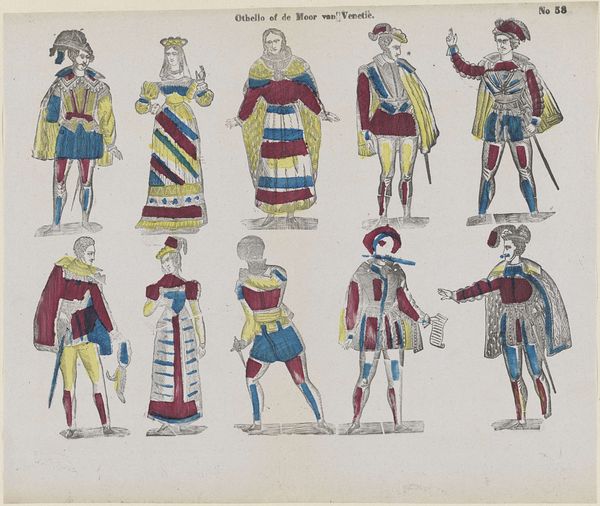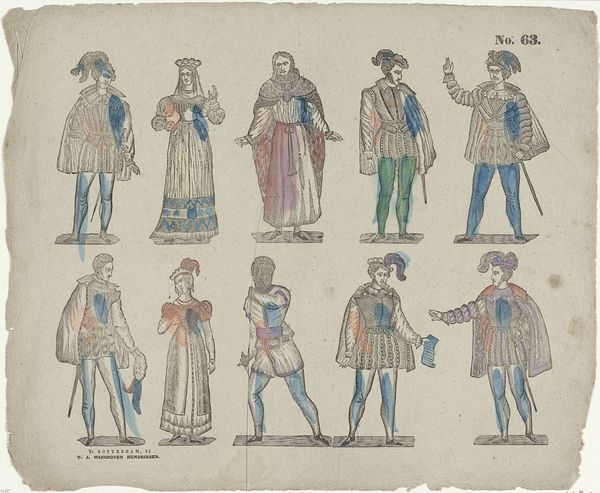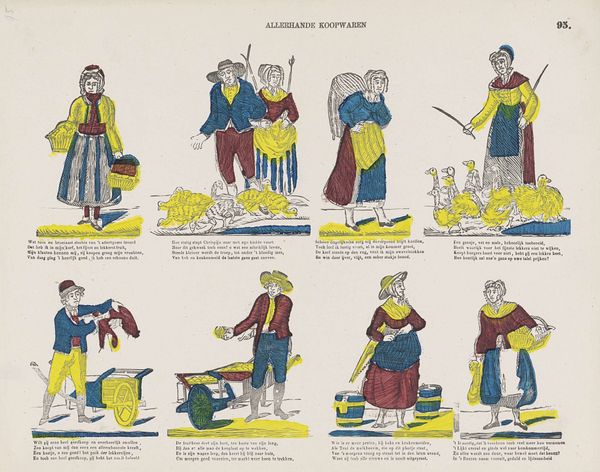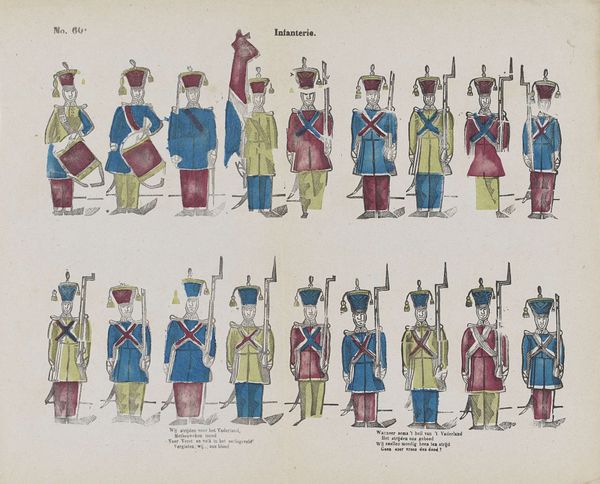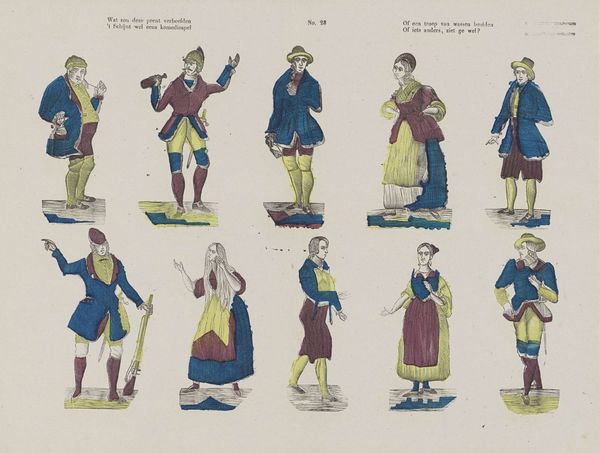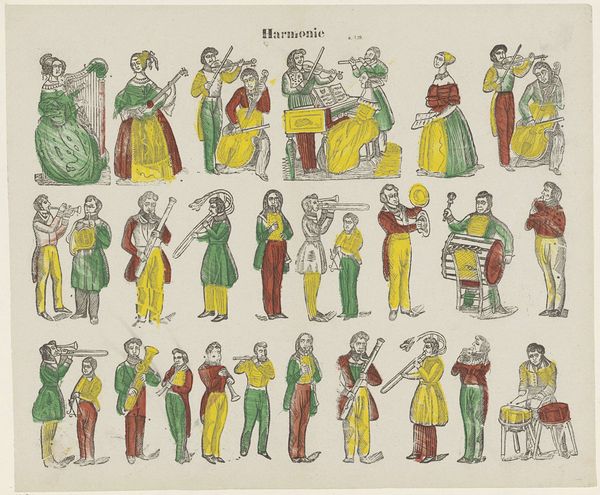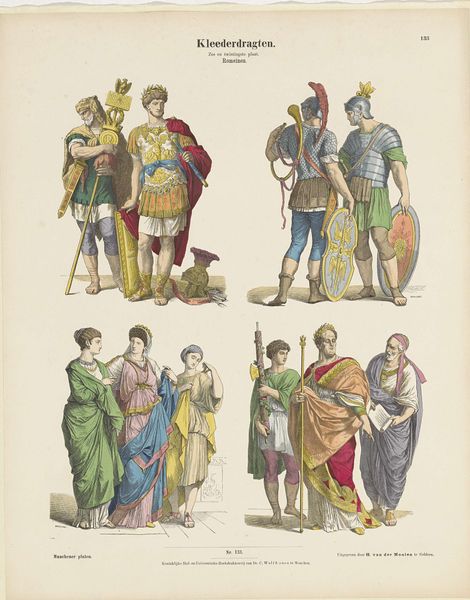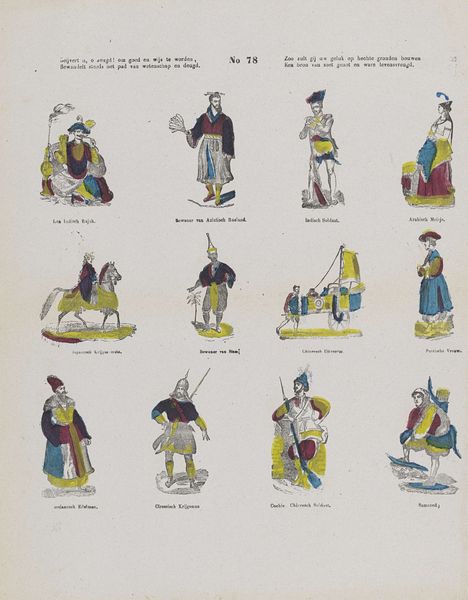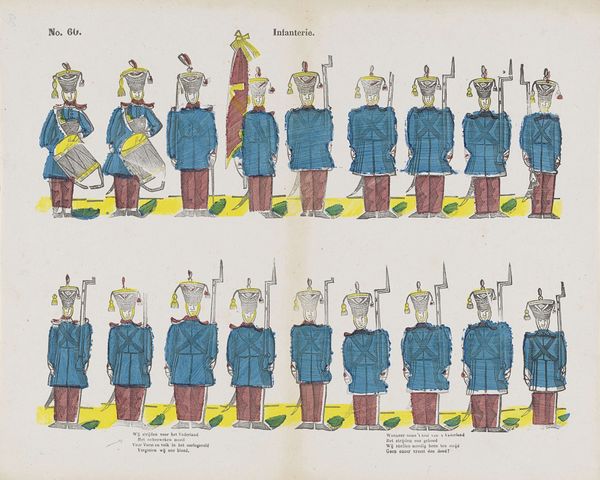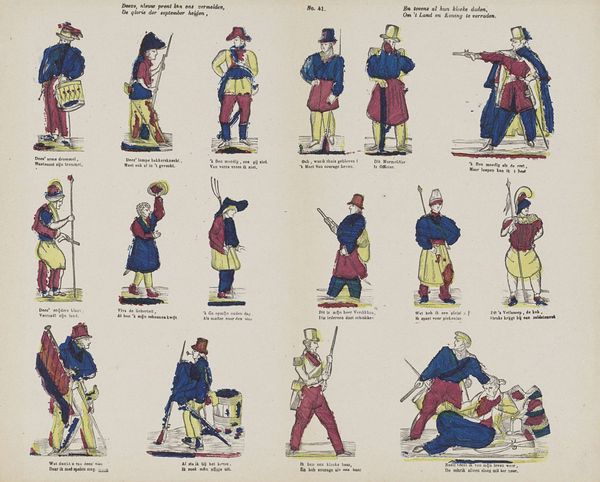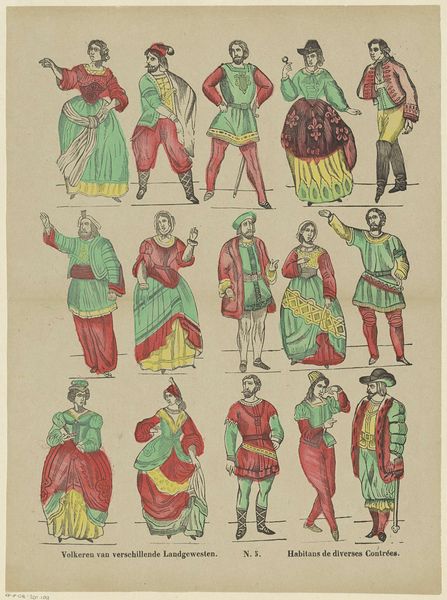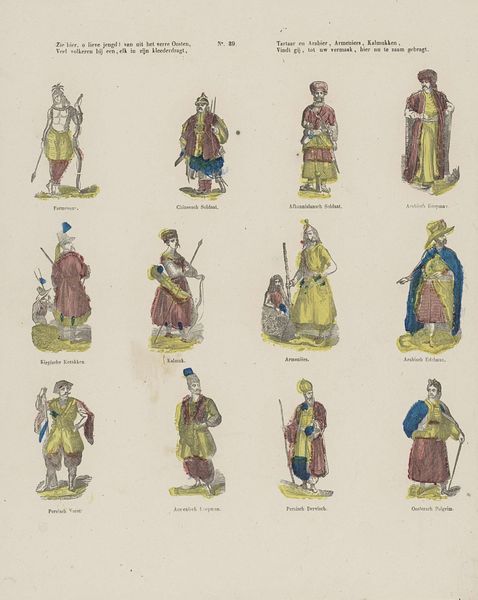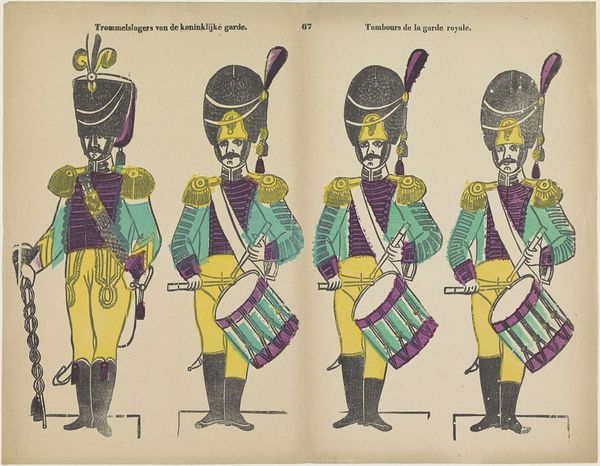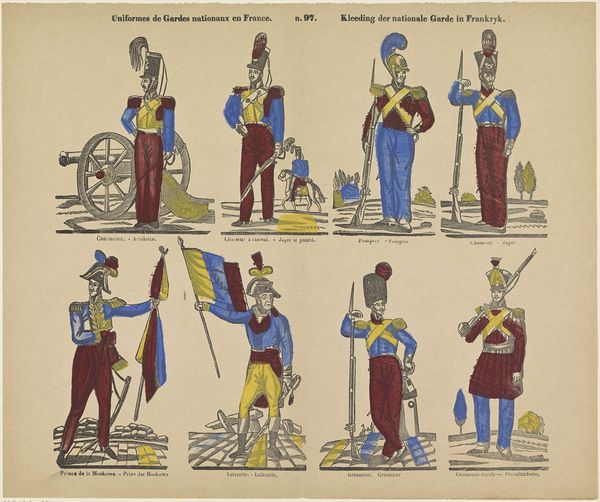
print, etching, engraving
#
portrait
#
fashion design
#
underwear fashion design
# print
#
fashion mockup
#
etching
#
collage layering style
#
fashion and textile design
#
historical fashion
#
fashion styking and communication
#
genre-painting
#
textile design
#
fashion sketch
#
engraving
#
clothing design
Dimensions: height 319 mm, width 392 mm
Copyright: Rijks Museum: Open Domain
Editor: So, this is “Othello of de Moor van Venetië,” a print from sometime between 1848 and 1881 by Lutkie & Cranenburg. It shows figures in what seem to be theatrical costumes. I find the flat, almost cartoonish depiction a bit odd. How do you interpret this work, given its historical context? Curator: This print, with its depictions of figures from Shakespeare's *Othello*, isn't just about aesthetics; it's a fascinating reflection of 19th-century European attitudes towards race and the "Orient." Note the emphasis on costume. Consider how fashion, and its depiction here through the print medium, became a means of reinforcing—or challenging—dominant cultural narratives. Does the costuming flatten or embolden Othello as a character? Editor: That's a great point about cultural narratives. I was so focused on the style of the piece that I hadn't considered how it might be portraying the characters themselves. So the way Othello is dressed reinforces, or perhaps challenges, ideas about him? Curator: Exactly! Think about who was creating and consuming these images. How did their own social positioning inform their understanding – and representation – of characters like Othello? These costume prints become sites of power. Is this exoticism or appreciation, appropriation or admiration? Consider the role of theater in shaping public perceptions of marginalized communities. Editor: That's really fascinating! It makes me rethink the entire piece, seeing it as less about fashion and more about how it was being used to communicate societal messages and reflect power dynamics. Curator: Precisely. By examining seemingly simple images through the lens of power and representation, we begin to unravel the complex relationship between art, identity, and social justice. What I see is not simply fashion design, but a historical document that allows for insight into past perceptions of race. Editor: This makes me wonder how contemporary artists are using fashion to comment on identity. I’ve certainly learned a lot from this different perspective!
Comments
No comments
Be the first to comment and join the conversation on the ultimate creative platform.
